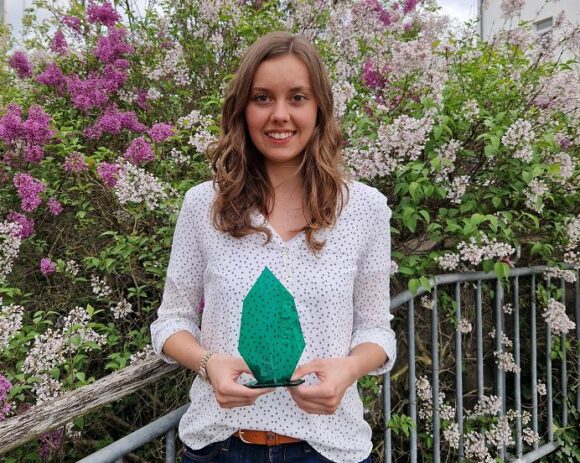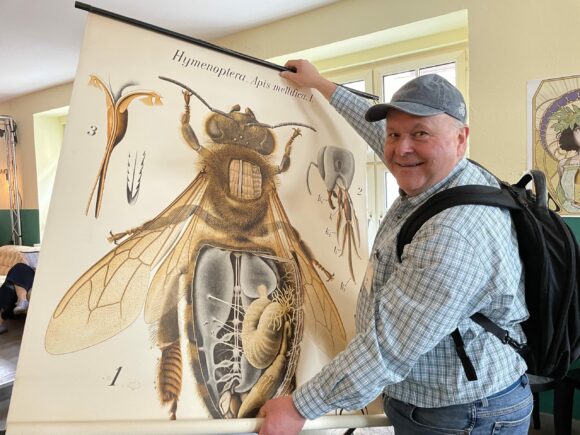A consortium around the lead partners Fraunhofer Institute for Material Flow and Logistics IML and DB Regio Bus is currently researching the development of an AI-based solution for planning and controlling future public transport services. The KI4autoBUS project primarily aims to improve mobility through autonomous shuttles. The Institute for Information Systems (iisys) at Hof University of Applied Sciences is also involved in the project, which has been running since October 2021 and will continue until the end of the year. An audio guide and its acoustic signals are intended to facilitate the barrier-free transportation of mobility-impaired persons in the future.

Since October 2017, Alexander Kern has been working as a research assistant at the Institute for Information Systems at Hof University of Applied Sciences (iisys) in the research group “Multimedia Information Systems”. He takes care of the Hof part of the development work as part of the KI4autoBUS project and on behalf of DB Regio Bus directly.
Barrier-free mobility
He explains:
The efficiency of local public transport (ÖPNV) can be noticeably increased for users and providers using artificial intelligence. Using Bad Birnbach as an example, the project shows that AI anticipates booking requests and places the autonomous shuttles at suitable stops ahead of time. Hof’s part is to supplement the already running shuttles in such a way that barrier-free transportation for mobility-impaired people is also improved.”
Alexander Kern
This is to be done by means of an audio guide that uses acoustic signals to facilitate the use of the shuttles for the relevant target group:
“The prototype we created will be used to also test acoustic information in a field test. The aim is to find out how the acoustic signals are accepted and to what extent they help the test persons. Acceptance of the autonomously driving shuttles also plays an important role here, because the more useful information passengers receive, the more they feel picked up, possibly reducing a basic mistrust of the technology. A shuttle that communicates and explains its actions and provides passengers with the best possible information is therefore an important step for acceptance.”

Facilitation through acoustic signals
“Due to the booking data of the travelers and the possibility to provide extended profile information (e.g., visual impairments), a need for voice information can arise in order to have travel and environmental information announced in the autonomous shuttle.” For example, information about accessible boarding is played when a person in a wheelchair is expected at a stop. Similar to bus or train journeys, the next stops are of course also announced. In addition, Bad Birnbach has what is known as a “familiarization tour” that gives passengers information about the region. “We are currently in the process of incorporating these texts – we can then play them afterwards at the correct GPS position via the audio guide,” says Alexander Kern.

Components from the “MakerSpace” at Hof University of Applied Sciences
The components required for the audio guide were specially produced in the MakerSpace at Hof University of Applied Sciences and are reversibly installed in the buses – so they can be uninstalled and replaced again if necessary. But there are other requirements for the device: It must be easy to update the routes and audio files. And the ability to perform remote maintenance is also essential: “We can connect to the device during operation and precisely track all internal processes and, if necessary, make changes directly,” says Kern. The audio guide itself obtains its current position via a GPS antenna, and an LTE antenna is then used to establish a connection to the back end, allowing any updates to be carried out at any time during operation (OTA).
The 3D modeling of the housing proved to be particularly challenging for the prototype, so that all components find their place in as little space as possible. In addition, the housing is designed with exchangeable side panels – this makes it easy to expand with additional peripherals, depending on requirements. A mini-computer, amplifier, fan, GPS + LTE module with the respective antennas, loudspeakers as well as peripherals (status LED, volume control, three programmable buttons) are also built into the device.
Data for the AI’s learning process
Essentially, the AI is intended to ensure that the shuttles are used more efficiently. This means that all ride requests in Bad Birnbach are taken into account, people with special mobility requirements (e.g. wheelchair users) are given preferential service in the event of multiple booking requests, and empty rides and long waiting times are avoided. The latter means that the AI anticipates booking requests (predictive demand) and places the shuttles at suitable stops ahead of time. To achieve this, reinforcement learning (RL) is used in the KI4autoBUS project and tested for functionality. RL is an area of machine learning that aims to make an agent (for example, a shuttle) independently learn to solve a specific task by interacting with its environment. In preparation for the use of AI in real operations, the agent is currently being trained, tested and further adapted in the simulation environment. Evaluations show that the agent continues to improve as training progresses. The agent is learning to choose its actions to maximize its reward, resulting in reduced passenger wait times and simultaneous condition of all trip requests.

In the next step, the agent is to be used in real operation and prove in field tests which skills it has learned during training in the simulation environment. “For this purpose, the agent receives real-time data on the trip requests and the positions of the shuttles via an interface from the dispatching system and is to use this to make a decision on which shuttle should be delegated to which stop,” explains Nicole Wagner-Hanl, Senior Consultant for Mobility and Digitalization at Fraunhofer IML.
Significant efficiency gains
The overall project aims to significantly increase the efficiency of the overall public transport system using artificial intelligence (AI). The AI’s autonomous decision-making process enables optimal transportation planning, tailored to the sometimes special requirements of each individual user. In addition, the AI has the ability to predict individual mobility needs and actively communicate the best mobility options to individual users based on the situation. To make the best use of project and development resources, the existing autonomous minibuses that have been in operation in Bad Birnbach for some time will be used for the enhancements and testing in this project. The modified minibuses will be used primarily to meet the needs of people with limited mobility.
Start of practical tests
Wagner-Hanl knows: “People with limited mobility in particular face the challenge of being independently mobile. The scarce resource of vehicles that meet the requirements in terms of improved accessibility could be ideally deployed through automated deployment planning with the help of an AI. This enables the differentiated allocation of modified and conventional vehicles to different user groups. In addition, benefits arise for travelers by avoiding long waiting times through a prediction of trip requests or a prediction of the most favorable waiting stop. At the same time, mobility providers also benefit by minimizing empty runs, optimizing fleet size, and reducing operating costs through improved shuttle use.”
Provided there is no demand from mobility-impaired travelers, the modified shuttle will also be used for normal operations to achieve the highest possible utilization. The field test with several test subjects is scheduled to start at the end of October 2023. If the tests of the Hof University of Applied Sciences audio guide are successful, integration into regular travel operations is possible.
“The project can make an efficient and smart contribution to the “Bavaria Barrier-Free” program, which aims to make public transportation barrier-free by 2023.”
Alexander Kern
The funding
The project is funded by the Bavarian Ministry of Economic Affairs, Regional Development and Energy (StMWi) under the Digitalization funding line, Information and Communication Technology funding area.
The consortium
The project consortium consists of research, development and application partners. The competences from mobility & passenger transport, software development and research are synergetically bundled in the consortium.







